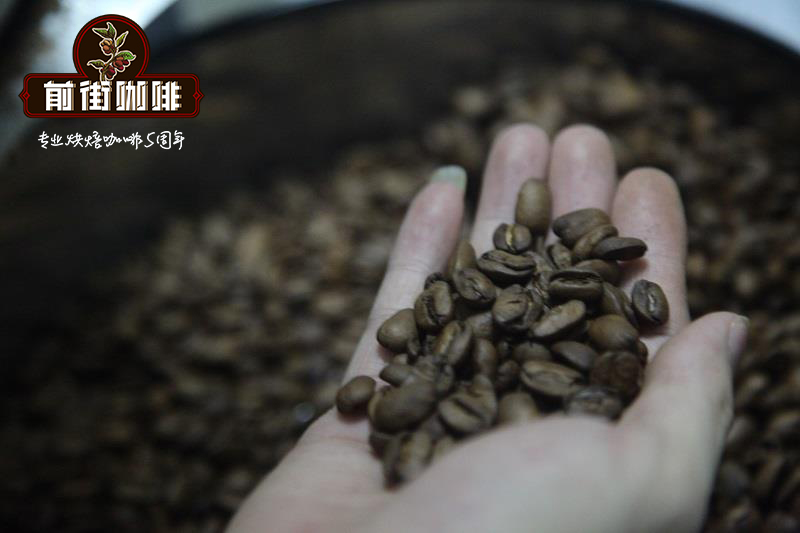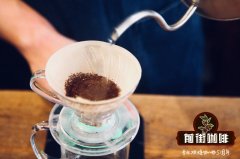What is Italian matching? How to choose the combination of coffee beans? The difference between skilled spelling and living spelling is again

Professional coffee knowledge exchange more coffee bean information please follow the coffee workshop (Wechat official account cafe_style)
What is mixed coffee?
Single coffee refers to coffee beans of single variety, single origin, or single roasting degree.
Blended coffee refers to coffee beans of different varieties, different producing areas, or different roasting degrees, which are generally combined by 2 or 5 kinds of coffee beans according to a certain need. Too many varieties will not show the unique flavor of coffee.
Blended coffee usually does not take the 1:1 blending ratio, because this may suppress each other's unique flavor, so the blending must be primary and secondary in order to produce a better taste than a single coffee. If you want the coffee to taste complex and changeable, you can reduce the proportion of raw beans, and vice versa. Coffee blending depends on constantly trying cup testing, so a blending schedule should be drawn up mathematically before blending, and then the best plan should be determined through the process of blending-cup testing. Don't think that this is a thing that doesn't keep up with the times or without the support of science and technology. in fact, you can make a good cup of coffee only through the experience, inspiration and tireless attempt of the mixer.
Why do you match?
There are generally four purposes for matching.
Cost reduction: in order to pursue a certain flavor, some low-priced coffee beans are used to prepare the flavor of some relatively high-priced coffee beans. Such as: blue Mountain flavor coffee.
Balanced taste: the espresso machine has a feature that magnifies the most significant flavor of coffee beans, so it is almost impossible to use a single variety of coffee beans to make espresso, otherwise if that coffee bean is bitter, the espresso made will be extremely bitter and sour. Therefore, it needs to be matched to balance all kinds of flavors.
Stable flavor: because coffee beans are a kind of crop, the flavor of coffee beans in the same producing area will be different from year to year, so mixing several kinds of coffee beans can solve this problem very well. can keep the flavor basically the same every year.
Unique flavor: for those who drink any kind of coffee can not satisfy their taste, or some businesses, in order to have their own unique flavor of coffee beans, will mix several kinds of coffee beans.
How to match
Different coffee beans have different personalities because of different varieties and producing areas, and there are subtle differences in sour, bitter, sweet, aroma, mellow thickness and other flavors. Single coffee beans often show the unique characteristics of a certain kind of coffee. And blended coffee, also known as mixed coffee, is to mix all kinds of single coffee beans together, so as to give full play to the strengths of various single coffee beans, learn from each other, or complement or strengthen each other in taste, thus creating a richer new taste of coffee.
Acid: mocha, Hawaii Kona, Mexico, Guatemala, Costa Rica SHB, Gillimanjaro, Colombia, Delvado, Western Hemisphere washing quality new beans
Bitter: Java, Mantenin, Bogota, Congo, Uganda
Gan: Colombia (Maitenin), Venezuela (aged coffee), Blue Mountains, Gillimanjaro, Mocha, Guatemala, Mexico, Kenya, Santos, Brazil, Haiti
Alcohols: Colombia (Metenin), Mocha, Blue Mountains, Guatemala, Costa Rica
Neutral: Brazil, Cervado, low real estate Costa Rica, Venezuela, Honduras, Cuba
How to bake mixed beans
The ideal purpose of blending is, of course, to piece together a coffee that tastes better than any of them. But generally speaking, Arabica coffee from a single origin is enough to make coffee that tastes good for export: fragrant taste, soft taste and sweet aftertaste. So there is no need for "matching".
When mixing coffee, you can first learn about three very preliminary coffee bean mixing methods.
First of all, decide on the basic coffee beans to be used when mixing, use the coffee beans as the center, and further choose other varieties rich in personality to reconcile the overall flavor.
You can try to combine coffee beans of the opposite nature, which can add a more special aroma of coffee.
Combine beans with similar properties and integrate them, and then further select beans rich in various flavors to add special aroma to the whole coffee.
In order to actually use these combinations, we must first understand the flavor of dozens of individual coffees, and each coffee shop will spell out different proportions of coffee beans according to its own characteristics. Here are several representative mixing proportions. Of course, you can also challenge yourself to try to find the proportion you like.
Sour espresso blending: 30% in Colombia, 60% in Brazil, 10% in Guatemala
The general method of blending coffee is 30% in Colombia, 60% in Brazil and 10% in Robusta.
Mixed commercial coffee with bitter taste: 30% in Colombia, 30% in Brazil, 30% in Mount Kilimanjaro, 10% in Robsta.
There are two spelling methods for spelling beans: first bake, then mix and then bake, also known as cooked and cooked, which is a greater test for bakers; the purpose of raising the mixed beans for a few more days is to make the beans blend and have a balanced flavor; cooked beans usually take about a week; raw and mixed beans can be used in 3-4 days, because different beans are already affecting each other when baking.
Important Notice :
前街咖啡 FrontStreet Coffee has moved to new addredd:
FrontStreet Coffee Address: 315,Donghua East Road,GuangZhou
Tel:020 38364473
- Prev

How to choose coffee beans suitable for Italian style? Do I have to deep-roast beans for espresso?
Professional coffee knowledge exchange more coffee bean information please follow the coffee workshop (Wechat official account cafe_style) Italian concentrate, can be a way of extraction, can be a drink. As a way of extraction, Italian concentration is the most frequent contact with the public and the most familiar to ordinary consumers. Perhaps because it is too familiar, it gives rise to the most doubts. It's just the beginning.
- Next

What is the effect of water quality on coffee extraction? Is TDS as low as possible? The Ca,Mg ion concentration is
Professional coffee knowledge exchange more coffee bean information Please follow the coffee workshop (Wechat official account cafe_style) Carbonate system generally refers to the factors related to water quality: TDS, hardness (GH), pH value, buffer index (KH), metal content, especially calcium and magnesium. In order to test the use of water for brewing coffee, the above factors and their interactions must be fully taken into account when evaluating the use of water for brewing coffee.
Related
- Beginners will see the "Coffee pull flower" guide!
- What is the difference between ice blog purified milk and ordinary milk coffee?
- Why is the Philippines the largest producer of crops in Liberia?
- For coffee extraction, should the fine powder be retained?
- How does extracted espresso fill pressed powder? How much strength does it take to press the powder?
- How to make jasmine cold extract coffee? Is the jasmine + latte good?
- Will this little toy really make the coffee taste better? How does Lily Drip affect coffee extraction?
- Will the action of slapping the filter cup also affect coffee extraction?
- What's the difference between powder-to-water ratio and powder-to-liquid ratio?
- What is the Ethiopian local species? What does it have to do with Heirloom native species?

